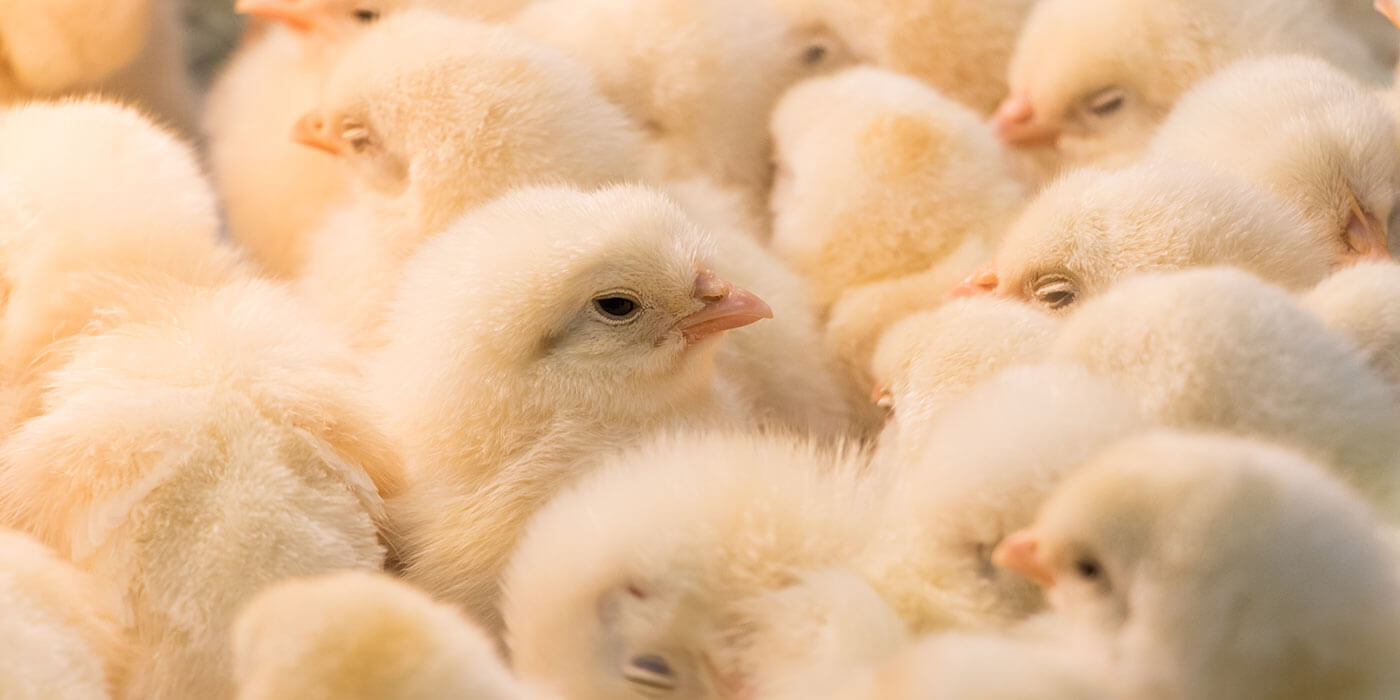Section 2 | Prevention Strategies for Necrotic Enteritis
Industry
Page 11 /
Controlling Coccidiosis
Coccidiosis can cause damage to the intestines and predispose animals to NE infection. Coccidiosis cannot be eliminated from your flock, which makes control practices all the more important.
Coccidiosis control practices include:
Environmental Hygiene
Coccidia eggs are very resistant in the environment, serving as a source of infection for subsequent crops of broilers1. Good hygiene will drastically reduce the amount of coccidia in the environment. Also, ensuring the housing areas have ample clean, dry litter will reduce the ability of coccidia in the environment to become infective.
Producers should:
- Pay attention to ventilation — it’s key! Ensure clean, fresh air at proper humidity levels is cycling through your barn to help manage disease
- Pay attention to areas where water is spilling or leaking
- Barns, trailers, equipment, and any areas of animal contact should be thoroughly cleaned and disinfected between crops
- This may change for Raised Without Antibiotics flocks, as it is important to maintain a healthy bacterial flora to help manage disease — speak with your veterinarian to determine the best hygiene protocols for your flock and barn
For an excellent review of the cleaning and disinfection process, see this presentation by the Food and Agriculture Organization (FAO) of the United Nations.
Your cleaning and disinfecting protocols should include humans! Always ensure your clothing and boots are clean, and wear gloves!
Use of In-Feed Anticoccidial Drugs
Use of in-feed anticoccidial drugs are a mainstay in preventing coccidiosis in your flock1.
There are a variety of compounds that should be fed continuously to growing birds to prevent coccidiosis, such as:
- Amprolium
- Lasalocid
- Monensin
- Diclazuril
- Salinomycin
- Clopidol
- Maduramicin
- Narasin/nicarbazin
- Decoquinate
- Sulfaquinoxaline/pyrimethamine
- Robenidine
- Zoalene
- The list is long — there are a lot of options!
Anticoccidial resistance can occur. Work with your veterinarian and nutritionist to decide on the right product, protocol, and feed inclusion rates for your flock
Work with your veterinarian and nutritionist to decide on the right product, protocol, and feed inclusion rates for your flock
Vaccination
There are a variety of oral and gel vaccines that can be administered to chicks under 5 days old in their drinking water (this is often done at the hatchery). Given the diversity of options to choose from, your veterinarian should be involved in designing the appropriate vaccination protocol for your flock.
For an excellent video, watch Greg Mathis of Southern Poultry Research discuss:
Keys to Successful Coccidiosis Control With a Bioshuttle Program with Poultry Health Today
References
- Trees AJ. Parasitic diseases. In: Poultry Diseases.6th ed. Elsevier Ltd; 2008. p. 444–67.


